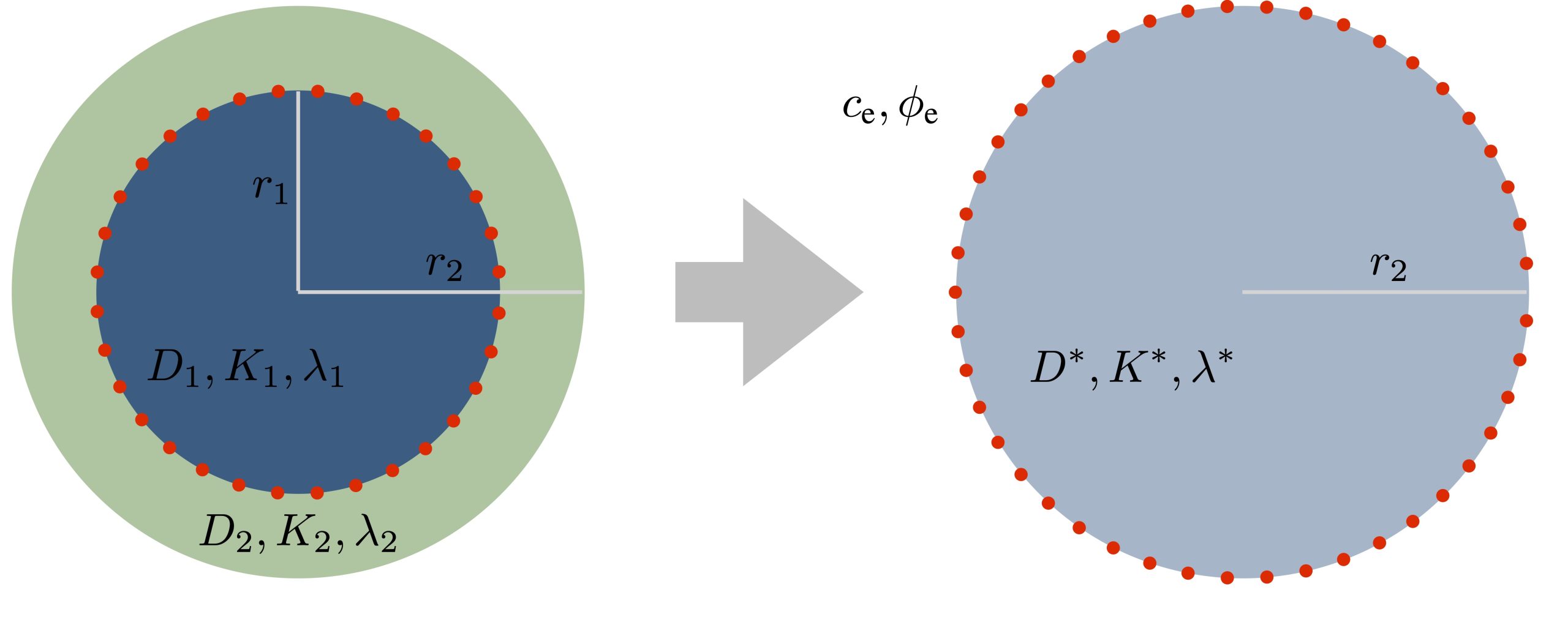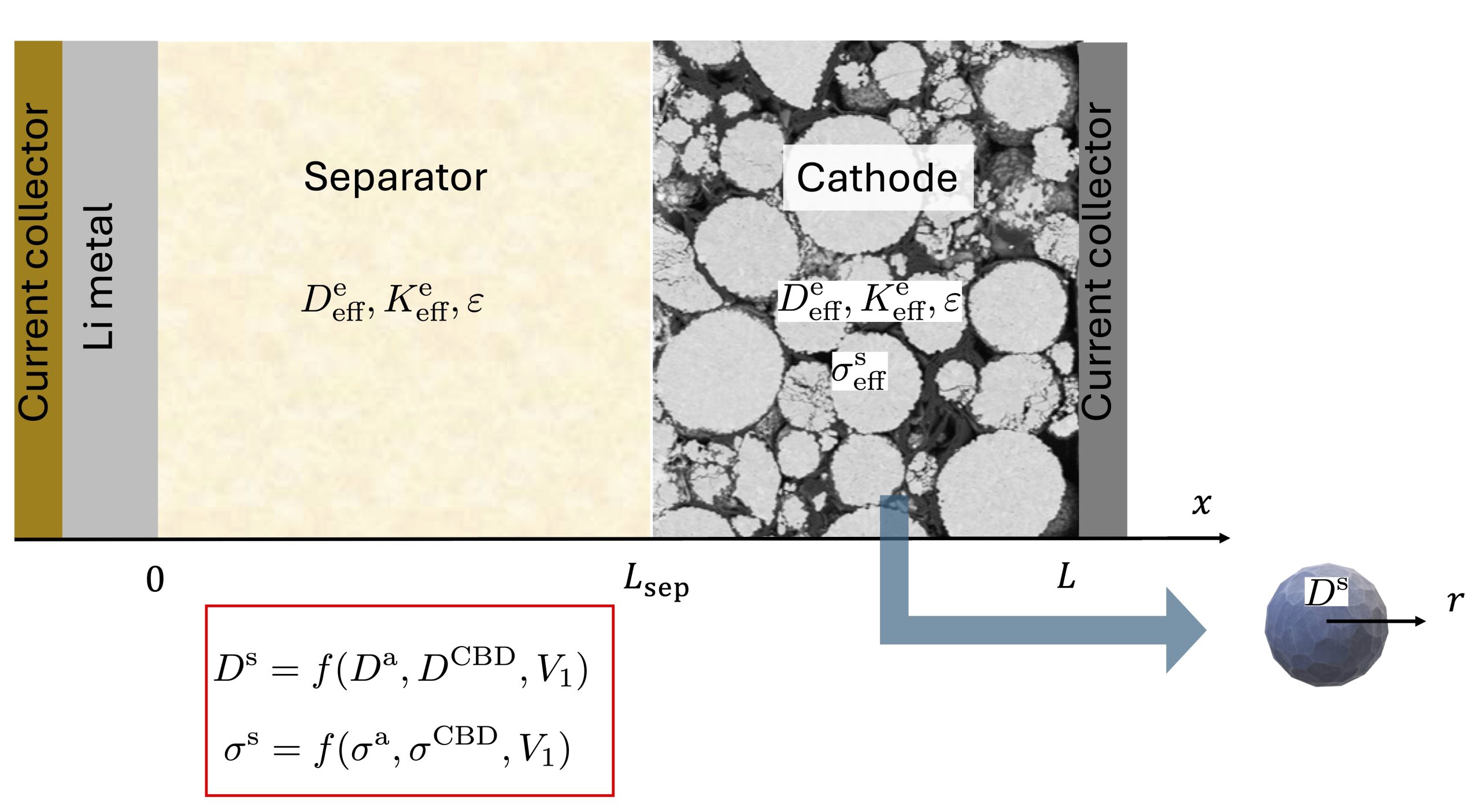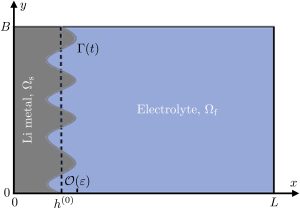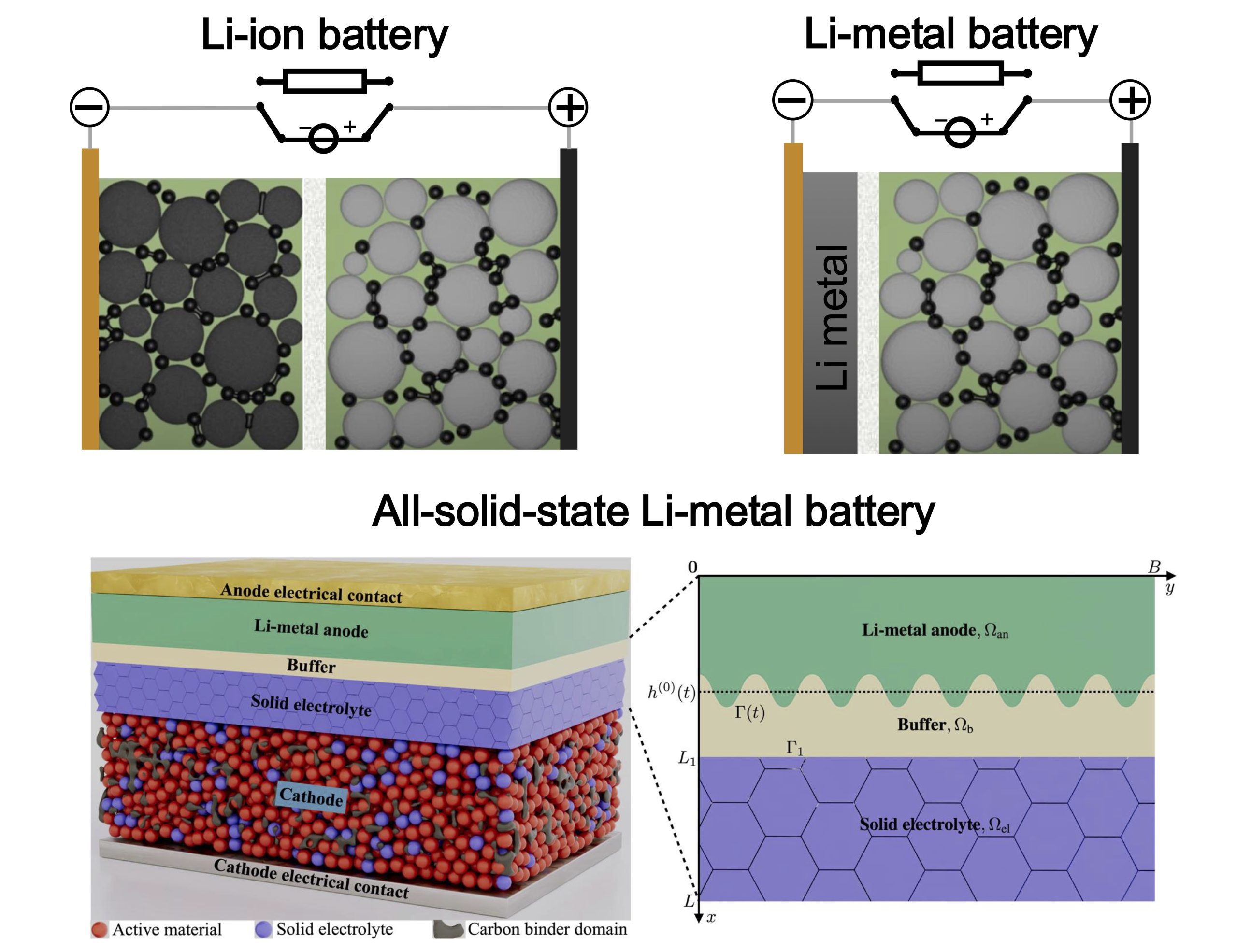Rechargeable lithium batteries are electrochemical devices widely used in portable electronics and electric-powered vehicles. A breakthrough in battery performance requires advancements in battery cell configurations at the microscale level. We conduct mesoscale modeling to accurately predict complex multiphase thermo-electrochemical phenomena, such as the migration of ions interacting with composite porous materials that make up a battery cell’s microstructure. This modeling approach is crucial for understanding and optimizing the intricate processes that occur within these systems.
Types of Batteries We Work On
-
Li-ion Batteries
-
Li-metal Batteries
-
Li-sulfur Batteries
-
All-solid-state Batteries
-
Aqueous Zn Batteries
Bridging Micro- and Macro-Scale Phenomena
Our research aims to provide mechanistic insights for optimizing battery materials—such as porous cathodes, Li-metal anodes, and electrolytes—and to bridge the gap between the micro-scale and macro-scale phenomena, and to connect the pore-scale physics to the overall cell performance.

We focus on the complex interactions between electrochemistry and transport phenomena occuring at fluid/solid interfaces. Such mesoscale modeling is advantages to study these systems given its ability to resolve the detailed physics occurring within them during operation when it is difficult to observe experimentally and smaller-scale methods, e.g., molecular dynamics, are too expensive to resolve pore-scale effects.
Key Research Focus
Mass, Charge and Thermal Transport at the Single-Particle Scale

Optimal design of porous cathodes requires efficient quantitative models of microscopic (pore-scale) electrochemical processes and their impact on battery performance. We derive effective properties (electrical conductivity, ionic diffusivity, reaction parameters, thermal conductivity) of a composite electrode comprising the active material coated with a mixture of the binder and conductor (the carbon binder domain or CBD). These effective descriptors ensure the conservation of mass, charge and energy.
Multi-Scale Parameterization of the Pseudo-two-dimensional (P2D) Models
 P2D models are routinely used to predict the lithiation curves for energy storage devices, including lithium-metal batteries. The performance of such models is as good as their parameterization, which remains a challenge especially in the presence of CBD. We propose alternative parameterization strategies, which explicitly account for the CBD volume fraction and physical properties. they significantly improve the predictions of lithiation curves in the presence of CBD. We also identify a P2D model that provides a middle ground between model complexity and prediction accuracy. The quantitative nature of this study can be used in the optimal design of porous cathodes.
P2D models are routinely used to predict the lithiation curves for energy storage devices, including lithium-metal batteries. The performance of such models is as good as their parameterization, which remains a challenge especially in the presence of CBD. We propose alternative parameterization strategies, which explicitly account for the CBD volume fraction and physical properties. they significantly improve the predictions of lithiation curves in the presence of CBD. We also identify a P2D model that provides a middle ground between model complexity and prediction accuracy. The quantitative nature of this study can be used in the optimal design of porous cathodes.
Non-equilibrium Thermal Models
 Temperature fluctuations play a crucial role in battery performance and safety. Conventional cell-level models assume thermal equilibrium within the electrode’s active material, overlooking internal thermal gradients. Our non-equilibrium thermal model captures spatial temperature variations in both the active material and the carbon-binder domain (CBD). We pinpoint conditions—based on heat generation and the thermal properties of electrolyte and solid phases—where the equilibrium assumption fails, making our model essential. Coupled with electrochemical models, our non-equilibrium approach predicts up to 50% higher internal temperatures under high discharge rates and large grain sizes. When applied to a commercial NMC battery, our non-equilibrium model predicts the battery surface temperature that is in good agreement with measurements, while the equilibrium model underestimates the observed temperature.
Temperature fluctuations play a crucial role in battery performance and safety. Conventional cell-level models assume thermal equilibrium within the electrode’s active material, overlooking internal thermal gradients. Our non-equilibrium thermal model captures spatial temperature variations in both the active material and the carbon-binder domain (CBD). We pinpoint conditions—based on heat generation and the thermal properties of electrolyte and solid phases—where the equilibrium assumption fails, making our model essential. Coupled with electrochemical models, our non-equilibrium approach predicts up to 50% higher internal temperatures under high discharge rates and large grain sizes. When applied to a commercial NMC battery, our non-equilibrium model predicts the battery surface temperature that is in good agreement with measurements, while the equilibrium model underestimates the observed temperature.
Dendrite Suppression on Metal Anodes
 Lithium plating and dendritic growth are the leading causes of degradation and catastrophic failure of lithium-ion and lithium-metal batteries.
Lithium plating and dendritic growth are the leading causes of degradation and catastrophic failure of lithium-ion and lithium-metal batteries.
Deep understanding of these phenomena would facilitate the design of strategies to reduce, or completely suppress, the onset of lithium plating on the graphite anode, and the instabilities characterizing electrodeposition on the lithium metal anode. This would ensure the safety and performance of lithium-metal batteries with liquid electrolyte, all-solid-state lithium batteries, aqueous zinc batteries, and lithium-ion batteries under fast charging conditions.
Holistic Design Insights
Our research provides mechanistic insights into the optimal design of
- Porous cathodes
- Electrolytes
- Additives
- Artificial solid-electrolyte interphase (SEI) layers
- Metal-anode morphology
- Charging protocols
- Dendrite-suppressing buffers between the lithium-metal anode and electrolyte
The design of electrolytes involves the optimal selection of a solvent and salt, the tuning of the ionic concentration of the solution, and the deployment of anisotropic electrolytes. This modeling framework has significantly advanced the understanding of electrochemical processes and transport phenomena in high-energy-density batteries, leading to improvements in safety, longevity, and energy density.
Selected Publications
- Li et al., “In situ formation of liquid crystal interphase in electrolytes with soft templating effects for aqueous dual-electrode-free batteries.”, Nature Energy, doi:10.1038/s41560-024-01638-z, 2024. PDF
- Yang el al., “Non-equilibrium thermal models of lithium batteries.”, Journal of Power Sources, 623(12), doi: 10.1016/j.jpowsour.2024.235428, 235428, 2024. PDF
- Li and Tartakovsky, “Effective models of heat conduction in composite electrodes.”, Journal of The Electrochemical Society, 170(10), doi:10.1149/1945-7111/acfdd4, 100503, 2023. PDF
- Li et al., “Screening of electrolyte-anode buffers to suppress lithium dendrite growth in all-solid-state batteries.”, Journal of The Electrochemical Society, 170(5), doi:10.1149/1945-7111/acd0da, 050510, 2023. PDF
- Boso et al., “Impact of carbon binder domain on the performance of lithium-metal batteries.”, Journal of The Electrochemical Society, 169(10), doi:10.1149/1945-7111/ac9a82, 100550, 2022. PDF
- Li et al., “Stability-guided strategies to mitigate lithium dendrite growth in Li-metal batteries.”, Journal of The Electrochemical Society, 169(6), doi:10.1149/1945-7111/ac7978, 060536, 2022. Featured in Stanford News. PDF
- Li and Tartakovsky, “Effective representation of active material and carbon binder in porous electrodes.”, Journal of The Electrochemical Society, 169(4), doi:10.1149/1945-7111/ac6832, 040556, 2022. PDF

